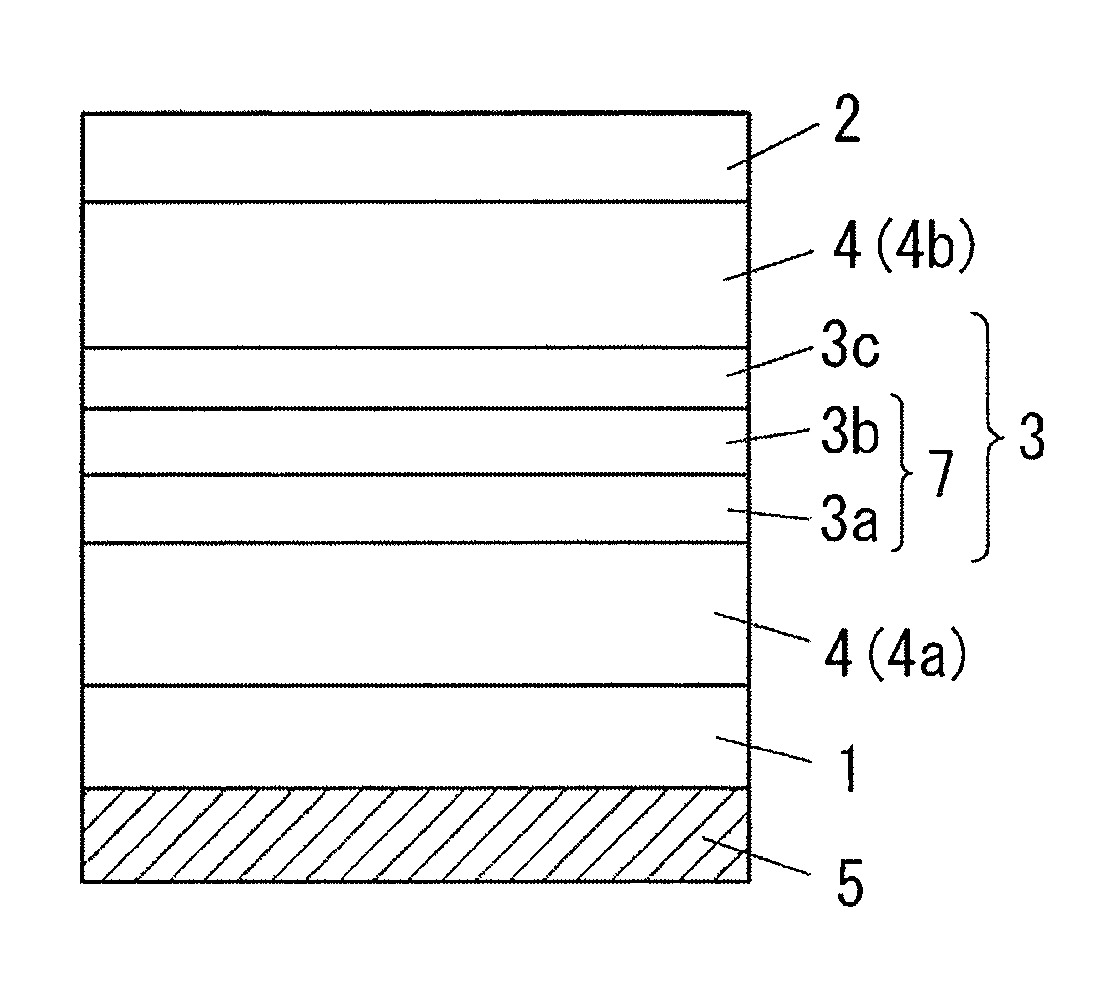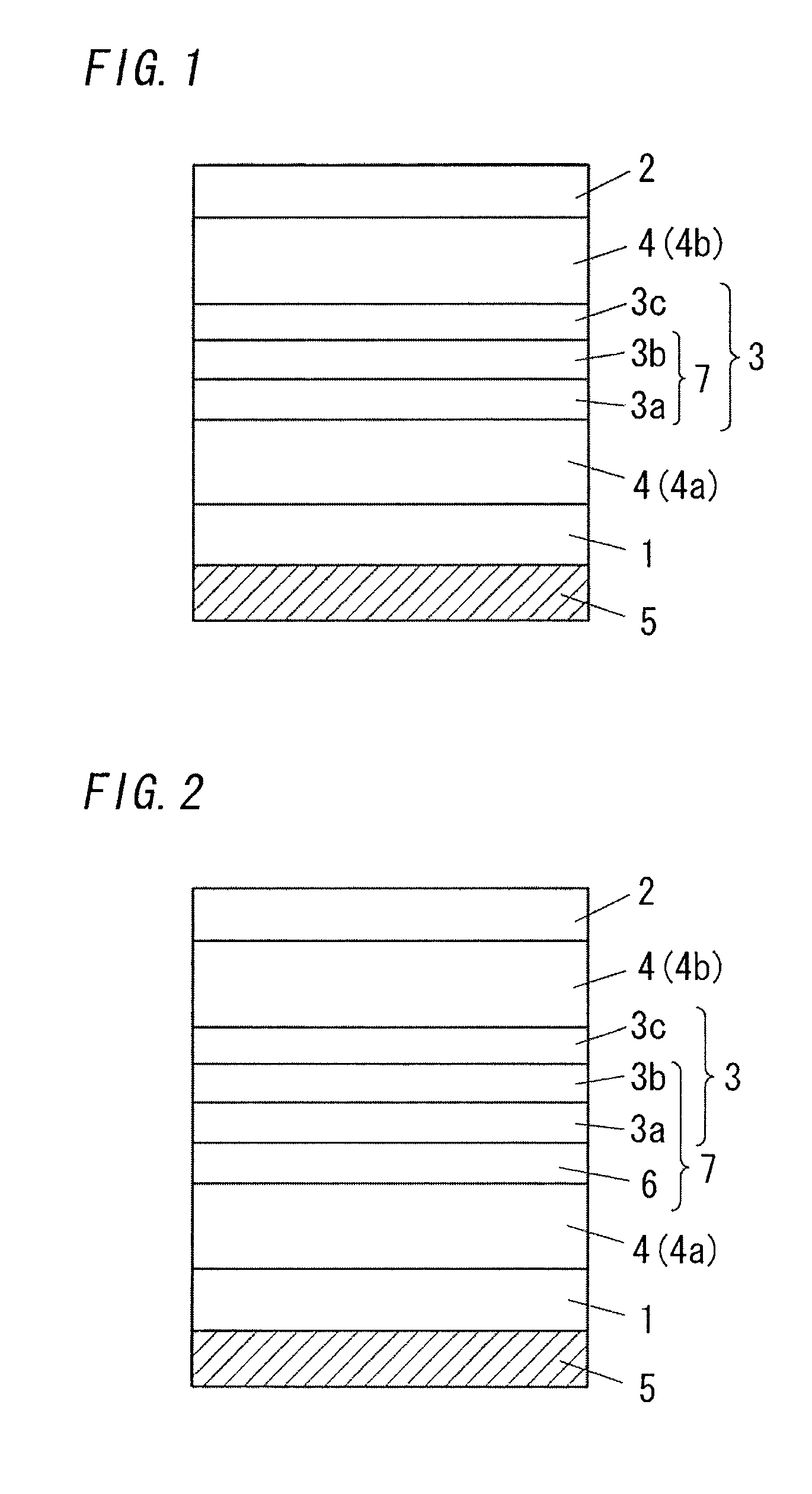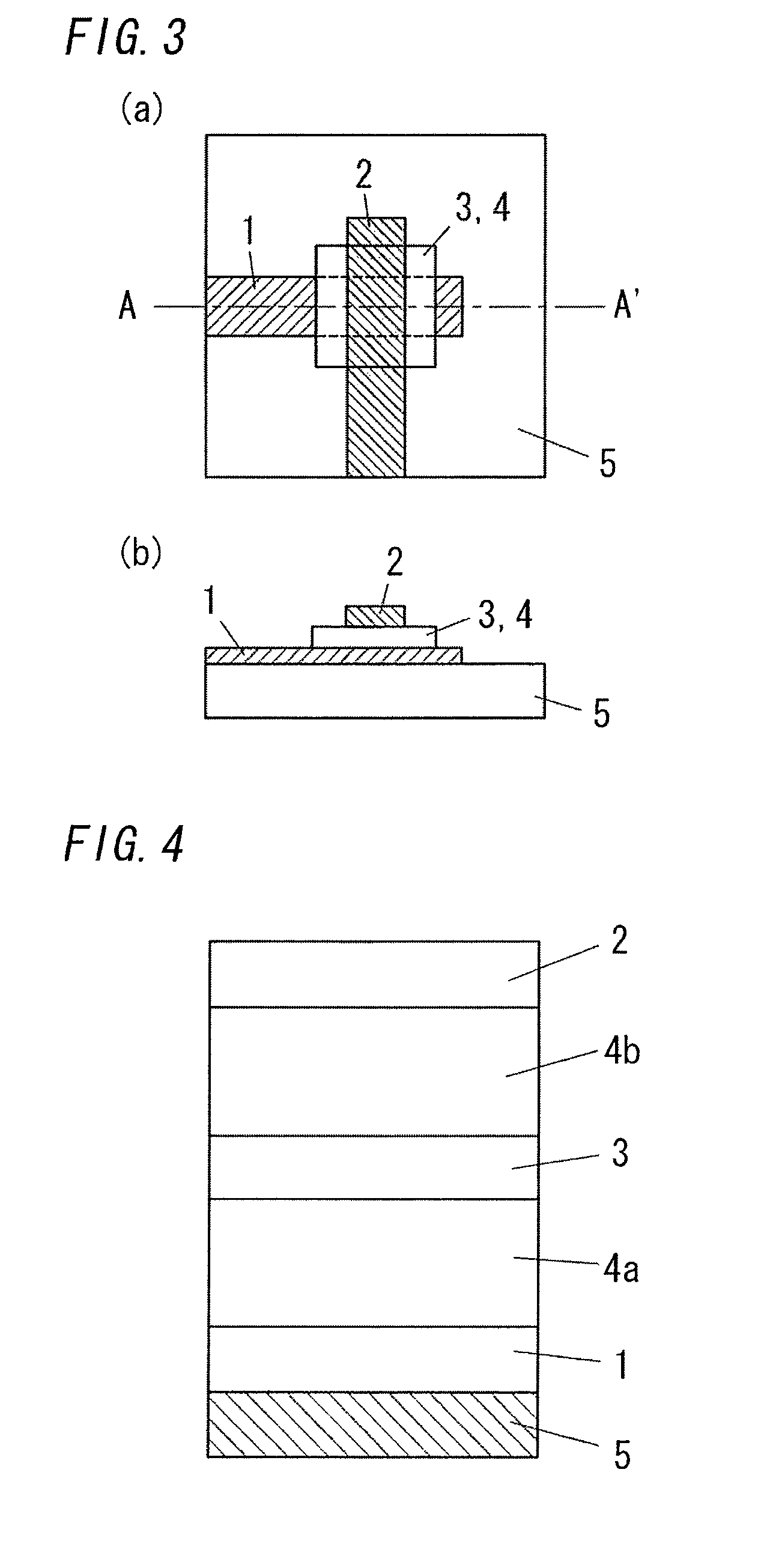Organic electroluminescent element
a technology of electroluminescent elements and organic materials, applied in the direction of discharge tubes/lamp details, luminescent tubes, thermoelectric devices, etc., can solve the problems of increased operation voltage, short circuit, undesired increase in voltage, etc., to suppress the direct reaction of mixed layers, the effect of superior long-term durability and lifetime characteristics
- Summary
- Abstract
- Description
- Claims
- Application Information
AI Technical Summary
Benefits of technology
Problems solved by technology
Method used
Image
Examples
example 1
[0078]First, as shown by the pattern of FIG. 3, a glass substrate 5 having a thickness of 0.7 mm carrying an ITO film, which has a thickness of 150 nm, a width of 5 mm, and a sheet resistance of about 10Ω / □, formed as a positive electrode 1 thereon was prepared. The substrate 5 was previously washed with detergent, ion-exchange water, and acetone respectively for 10 minutes under ultrasonication, vapor-washed with IPA (isopropyl alcohol), dried and additionally subjected to UV / O3 treatment.
[0079]The substrate 5 was then fixed in a vacuum evaporator and a film of 4,4′-bis[N-(naphthyl-N-phenyl-amino]biphenyl (α-NPD) and tetrafluoro-tetracyano-quinodimethane (F4-TCNQ) (molar ratio 1:1) having a thickness of 30 nm was formed as a hole-injection layer, on the surface of the positive electrode 1 formed on the substrate 5, by co-vapor deposition in a reduced-pressure atmosphere at 1×10−4 Pa or less. Next, a film of α-NPD having a thickness of 30 nm was formed as hole-transporting layer on ...
example 2
[0089]An organic electroluminescent element was prepared in a manner similar to Example 1, except that, in preparation of the mixed layer 3a of intermediate layer 3, a film of BCP having a thickness of 9 nm was first formed on the electron-transporting layer and a film of Li having a thickness of 1 nm was formed thereon, to give a mixed layer 3a containing an electron-donating substance (Li) and an electron-transporting organic material (BCP).
PUM
 Login to View More
Login to View More Abstract
Description
Claims
Application Information
 Login to View More
Login to View More - R&D
- Intellectual Property
- Life Sciences
- Materials
- Tech Scout
- Unparalleled Data Quality
- Higher Quality Content
- 60% Fewer Hallucinations
Browse by: Latest US Patents, China's latest patents, Technical Efficacy Thesaurus, Application Domain, Technology Topic, Popular Technical Reports.
© 2025 PatSnap. All rights reserved.Legal|Privacy policy|Modern Slavery Act Transparency Statement|Sitemap|About US| Contact US: help@patsnap.com



